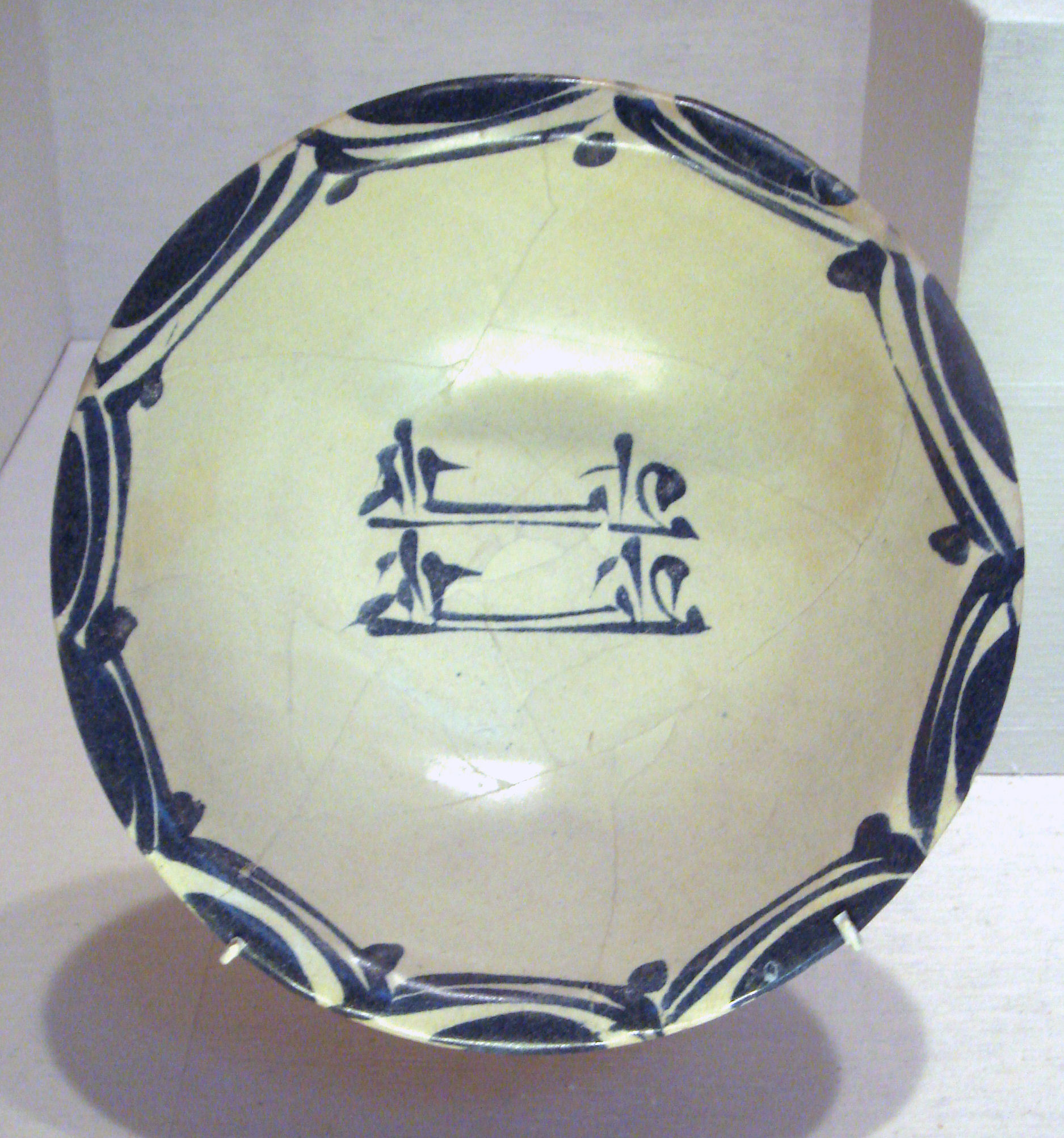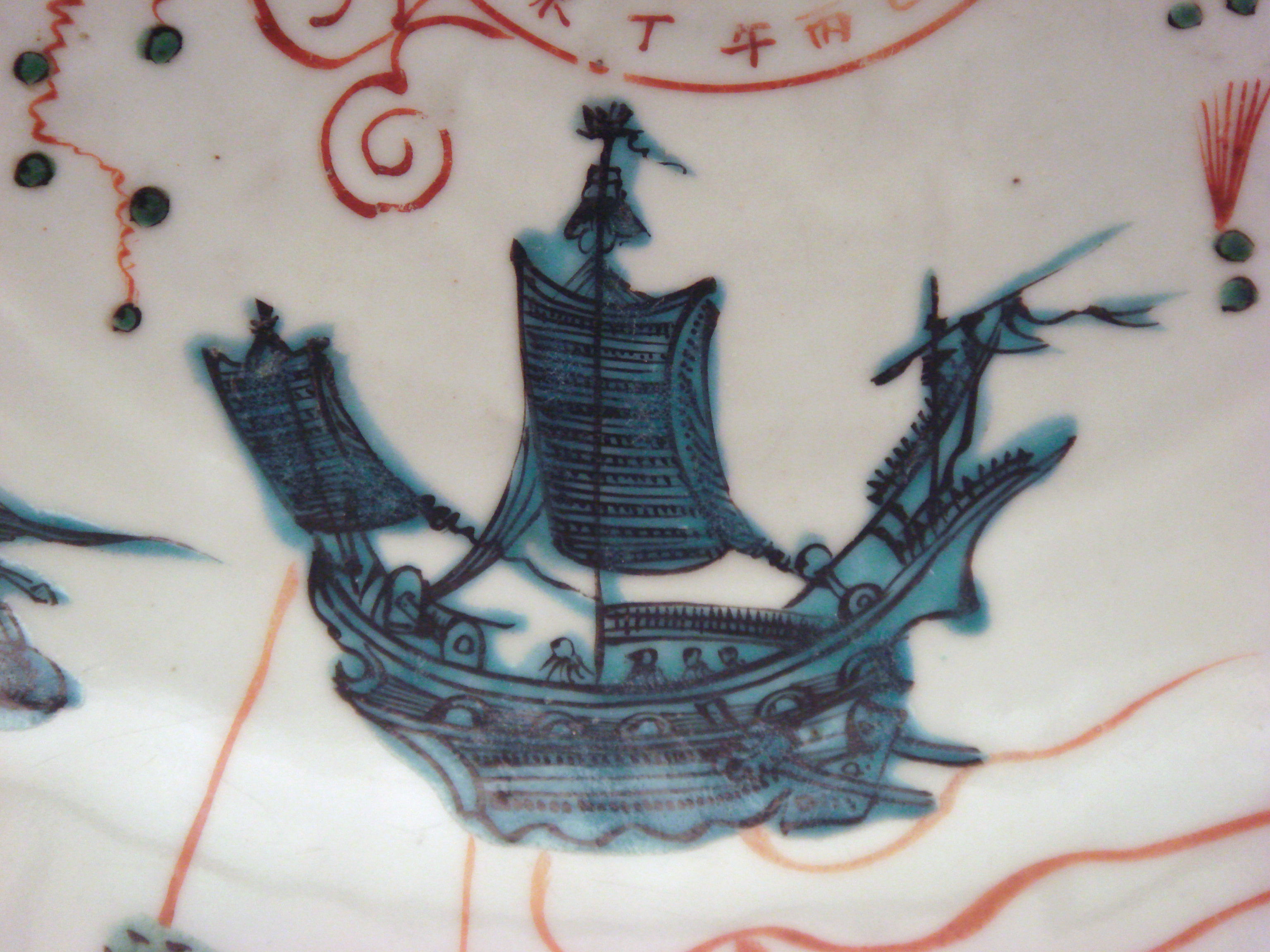|
Albarello
An albarello (plural: ''albarelli'') is a type of maiolica earthenware jar, originally a medicinal jar designed to hold apothecaries' ointments and dry drugs. The development of this type of pharmacy jar had its roots in the Middle East during the time of the Islamic conquests. History The etymology of the word is not clear. Some scholars argue that it derives from the Latin word ''"albaris"'' with the meaning of "whitish" while others criticize this interpretation because these jars were originally manufactured in wood. A piece of parchment would overlap the upper half of the jar in order to be affixed with a cord and properly seal the contents. The parchment was white, or bleached white, so that the contents of the jar could be written upon it. ''Albarelli'' were brought to Italy by Hispano-Moresque traders, and the earliest Italian examples were produced in Florence in the 15th century. ''Albarelli'' were made in Italy from the first half of the 15th century through to the la ... [...More Info...] [...Related Items...] OR: [Wikipedia] [Google] [Baidu] |
Esteve Pharmacy
The Esteve Pharmacy ( ca, Farmàcia Esteve, ) is a medieval pharmacy and museum located in the town of Llívia, in the comarca of Cerdanya, Catalonia, Spain. Llívia is a Spanish exclave within the French region of Pyrénées-Orientales. The Esteve Pharmacy, founded at the beginning of the 15th century, is one of the oldest pharmacies in Europe and keeps a collection of albarellos from the 16th and 17th centuries, glass from the 19th century, Renaissance boxes with portraits of saints and personages, a library, laboratory instruments, antique drugs and preparations, old prescription books, and a Baroque "cordialer" cupboard made by Josep Sunyer during the period when the Esteve family managed the pharmacy for up to seven generations. It is one of the most important collections of its kind in Europe. In 1942, Lleó Antoni Esteve closed the pharmacy and moved to Puigcerdà. In 1958 the pharmacy was transferred to the town of Llívia, and the Province of Girona Diputació purchased it ... [...More Info...] [...Related Items...] OR: [Wikipedia] [Google] [Baidu] |
Medicinal Jar
A medicinal jar, drug jar, or apothecary jar is a jar used to contain medicines. Ceramic medicinal jars originated in the Islamic world and were brought to Europe where the production of jars flourished from the Middle Ages onward. Potteries were established throughout Europe and many were commissioned to produce jars for pharmacies and monasteries. They are an important category of the Dutch and English porcelain known as Delftware. The jars were used by apothecaries in pharmacies and dispensaries in hospitals and monasteries. Apothecaries needed containers to store herbs, roots, syrups, pills, ointments, spices and other ingredients used to make remedies as well as the medicines themselves. History Earthenware storage jars for drugs have been found on archaeological sites in Turkey, Iran, Iraq, Greece and Rome. The technology appears to have originated in Mesopotamia in 600–400 B.C. A number of innovations occurred in Western Asia regarding pottery decoration, particularly t ... [...More Info...] [...Related Items...] OR: [Wikipedia] [Google] [Baidu] |
Blue And White Porcelain
"Blue and white pottery" () covers a wide range of white pottery and porcelain decorated under the glaze with a blue pigment, generally cobalt oxide. The decoration is commonly applied by hand, originally by brush painting, but nowadays by stencilling or by transfer-printing, though other methods of application have also been used. The cobalt pigment is one of the very few that can withstand the highest firing temperatures that are required, in particular for porcelain, which partly accounts for its long-lasting popularity. Historically, many other colours required overglaze decoration and then a second firing at a lower temperature to fix that. The origin of the blue glazes thought to lie in Iraq, when craftsmen in Basra sought to imitate imported white Chinese stoneware with their own tin-glazed, white pottery and added decorative motifs in blue glazes. Such Abbasid-era pieces have been found in present-day Iraq dating to the 9th century A.D., decades after the opening of a ... [...More Info...] [...Related Items...] OR: [Wikipedia] [Google] [Baidu] |
Swatow Porcelain
Swatow ware or Zhangzhou ware is a loose grouping of mainly late Ming dynasty Chinese export porcelain wares initially intended for the Southeast Asian market. The traditional name in the West arose because Swatow, or present-day Shantou, was the South Chinese port in Guangdong province from which the wares were thought to have been shipped. The many kilns were probably located all over the coastal region, but mostly near Zhangzhou, Pinghe County, Fujian, where several were excavated in the mid-1990s, which has clarified matters considerably. Many authorities now prefer to call the wares Zhangzhou ware, as it seems that Swatow did not become an important export port until the 19th century, and the wares were actually probably exported from Yuegang, now Haicheng, Fujian, Haicheng in Longhai City, Zhangzhou. The precise dates for the beginning and ending of production remain uncertain, but the evidence from archaeology suggests production between about 1575–1650, though an earli ... [...More Info...] [...Related Items...] OR: [Wikipedia] [Google] [Baidu] |
Maiolica
Maiolica is tin-glazed pottery decorated in colours on a white background. Italian maiolica dating from the Renaissance period is the most renowned. When depicting historical and mythical scenes, these works were known as ''istoriato'' wares ("painted with stories"). By the late 15th century, multiple locations,L. Arnoux, 1877, British Manufacturing Industries – Pottery "Most of the Italian towns had their manufactory, each of them possessing a style of its own. Beginning at Caffagiolo and Deruta, they extended rapidly to Gubbio, Ferrara, and Ravenna, to be continued to Casteldurante, Rimini, Urbino, Florence, Venice, and many other places." mainly in northern and central Italy, were producing sophisticated pieces for a luxury market in Italy and beyond. In France maiolica developed as faience, in the Netherlands and England as delftware, and in Spain as talavera. In English the spelling was anglicised to ''majolica'' but the pronunciation usually preserved the vowel with an ... [...More Info...] [...Related Items...] OR: [Wikipedia] [Google] [Baidu] |
Hispano-Moresque
Hispano-Moresque ware is a style of initially Islamic pottery created in Al-Andalus, which continued to be produced under Christian rule in styles blending Islamic and European elements. It was the most elaborate and luxurious pottery being produced in Europe until the Italian maiolica industry developed sophisticated styles in the 15th century, and was exported over most of Europe. The industry's most successful period was the 14th and 15th centuries. Around 711, the Moors conquered part of Spain. Over the following centuries, they introduced two ceramic techniques to Europe: glazing with an opaque white tin-glaze, and lustreware, which imitates metallic finishes with iridescent effects. Hispano-Moresque wares use both processes, applying the paint as an overglaze which is then fired again. Lustreware was a speciality of Islamic pottery, at least partly because the use of drinking and eating vessels in gold and silver, the ideal in ancient Rome and Persia as well as medie ... [...More Info...] [...Related Items...] OR: [Wikipedia] [Google] [Baidu] |





